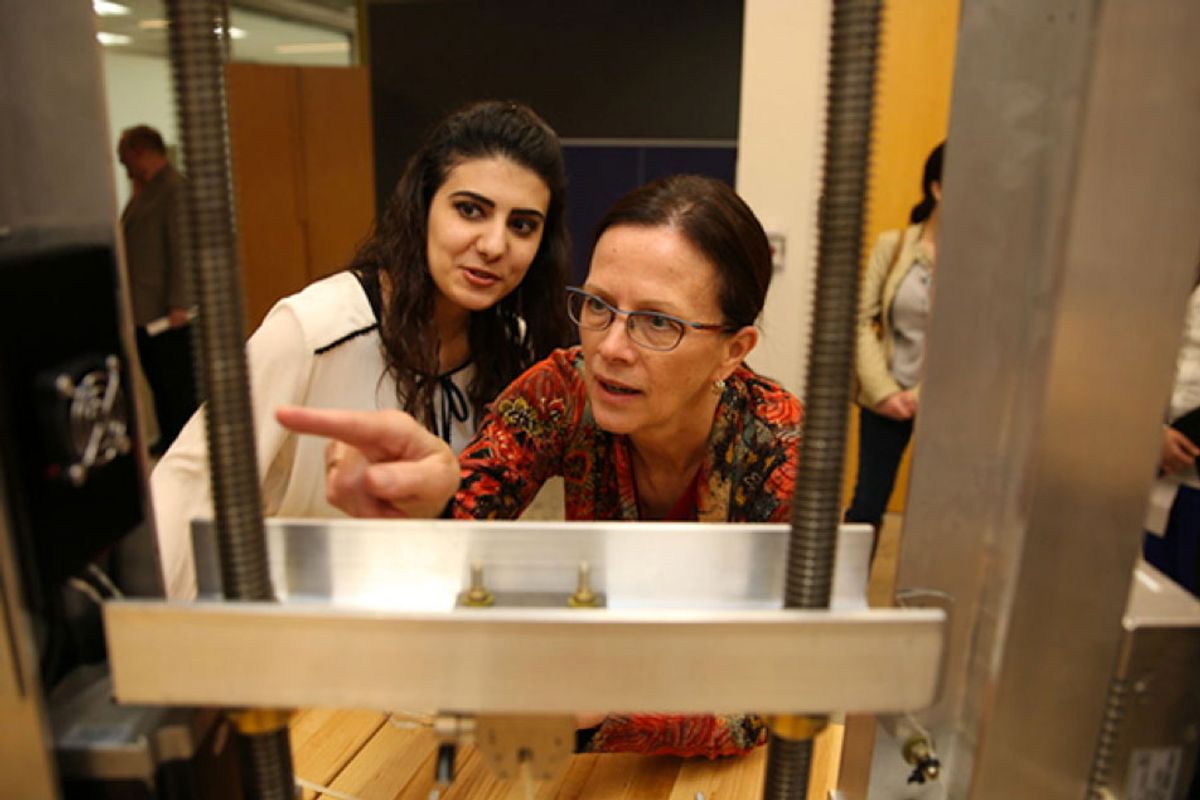THE INSTITUTE Kathryn Jablokow was inspired to pursue a career in academia by her father, who taught electrical engineering at Ohio State University, in Columbus, for 52 years. She took note of how he helped students understand difficult engineering concepts, conducted interesting research and, more importantly for her, learned something new every day—often by traveling abroad.
The IEEE senior member followed in her father’s footsteps in 1990, when she joined the faculty of Pennsylvania State University as a professor of engineering design and mechanical engineering. She had spent the previous year doing research at a manufacturing institute at RWTH Aachen University, in Germany.
Earlier this year, she took on a new job—but not in academia. She was appointed as program director for the National Science Foundation’s Engineering Design and Systems Engineering program in the Division of Civil, Mechanical, and Manufacturing Innovation. The EDSE program supports fundamental research into the basic processes and phenomena of engineering design and systems engineering.
During her term, which she began in July, Jablokow is overseeing the research projects currently being funded by the NSF. She guides each project’s lead researchers as they complete their work. She also evaluates and helps choose which new projects will receive funding from the foundation.
The position of program director brings together Jablokow’s research experience, as well as her passion for mentoring others.
“I like a challenge. I enjoy helping engineers generate bold research questions and find ways to make connections between different technical domains in order to answer them,” she says. “It’s what I’ve done in my research, and it’s what I want to do at the National Science Foundation.”
PLANS FOR THE FUTURE
When Jablokow first joined Penn State, she was conducting research in robotics, but she found that her true passion lay elsewhere.
“I was helping design walking machines at Ohio State that were big enough to carry humans as well as cargo,” she says. “Along the way, I realized I had an even greater interest in the cognitive side of engineering design, from the perspective of both machines and engineering systems.”
She began collaborating with researchers who were investigating design cognition, which includes the application of cognitive psychology to help understand how engineers think and behave while they design and develop products and systems. She has been working in that area ever since.
“Interacting with engineering-design researchers pulled me into the research that I’ve been doing for the last 20 years,” she says. The research “focuses more on the person doing the design and how that person’s cognitive processes influence the ideas they generate and the solutions they develop.”
In addition to guiding principal investigators at the NSF, Jablokow will be a driving force in expanding the scope and vision of the agency’s engineering design and systems engineering program.
“I was drawn to it [the position] because EDSE is in a stage of renewal, redevelopment, and a sort of renaissance,” she says.
The program attracts investigators from three domains, she says: engineering design, systems engineering, and material systems design. But, she says, the researchers often don’t interact or collaborate with one another, mostly due to a lack of familiarity with what the other communities are doing.
“I want to break down the walls between these communities of researchers,” she says, “and show them that there are really interesting things they could be exploring together.”
FUNDING NEW PROJECTS
The NSF has two requirements for funding projects: intellectual merit and broader impacts. A project needs to be novel, feasible, rigorous, and relevant to meet the intellectual-merit benchmark, Jablokow says.
“Under the scope of broader impacts, reviewers [and I] look to see if the principal investigators have identified an important problem and a path to solving it that will benefit society,” she says. “Broader impacts need to be just as thoughtfully considered and planned as intellectual merit.
“Engineers design and build better things to aid society. They are trained to be problem solvers,” she says. “In a world with so many challenging and complex problems, engineering is an incredible way to give back to your community and to society in general. I think helping people recognize that fact is an important part of the job.”
Jablokow is looking to fund more research that is interdisciplinary. She says she believes it is important for researchers to work with people in other disciplines.
“I’d like to see researchers in engineering design and systems engineering working with educators, psychologists, biologists, and medical doctors,” she says.
As a program manager, she says, she hopes to help researchers and projects flourish while expanding her own knowledge.
“I know that at the National Science Foundation, I’m going to be exposed to many things that I know nothing about,” Jablokow says. “And to me, that’s incredibly exciting.
“I know my dad would be very proud.”
This article appears in the December 2020 print issue as “NSF’s Kathryn Jablokow Seeks Projects With a Humanitarian Edge.”
IEEE membership offers a wide range of benefits and opportunities for those who share a common interest in technology. If you are not already a member, consider joining IEEE and becoming part of a worldwide network of more than 400,000 students and professionals.
Joanna Goodrich is the associate editor of The Institute, covering the work and accomplishments of IEEE members and IEEE and technology-related events. She has a master's degree in health communications from Rutgers University, in New Brunswick, N.J.



